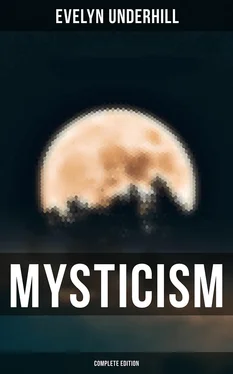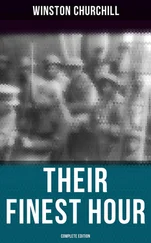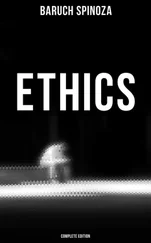It is doubtful whether any two selves have offered themselves exactly the same image of the truth outside their gates: for a living metaphysic, like a living religion, is at bottom a strictly personal affair — a matter, as William James reminded us, of vision rather than of argument.5 Nevertheless such a living metaphysic may — and if sound generally does — escape the stigma of subjectivism by outwardly attaching itself to a traditional School; as personal religion may and should outwardly attach itself to a traditional church. Let us then consider shortly the results arrived at by these traditional schools — the great classic theories concerning the nature of reality. In them we see crystallized the best that the human intellect, left to itself, has been able to achieve.
I. The most obvious and generally accepted explanation of the world is of course that of Naturalism, or naive Realism: the point of view of the plain man. Naturalism states simply that we see the real world, though we may not see it very well. What seems to normal healthy people to be there, is approximately there. It congratulates itself on resting in the concrete; it accepts material things as real. In other words, our corrected and correlated sense impressions, raised to their highest point of efficiency, form for it the only valid material of knowledge: knowledge itself being the classified results of exact observation.
Such an attitude as this may be a counsel of prudence, in view of our ignorance of all that lies beyond: but it can never satisfy our hunger for reality. It says in effect, “The room in which we find ourselves is fairly comfortable. Draw the curtains, for the night is dark: and let us devote ourselves to describing the furniture.” Unfortunately, however, even the furniture refuses to accommodate itself to the naturalistic view of things. Once we begin to examine it attentively, we find that it abounds in hints of wonder and mystery: declares aloud that even chairs and tables are not what they seem.
We have seen that the most elementary criticism, applied to any ordinary object of perception, tends to invalidate the simple and comfortable creed of “common sense”; that not merely faith but gross credulity, is needed by the mind which would accept the apparent as the real. I say, for instance, that I “see” a house. I can only mean by this that the part of my receiving instrument which undertakes the duty called vision is affected in a certain way, and arouses in my mind the idea “house.” The idea “house” is now treated by me as a real house, and my further observations will be an unfolding, enriching, and defining of this image. But what the external reality is which evoked the image that I call “house,” I do not know and never can know. It is as mysterious, as far beyond my apprehension, as the constitution of the angelic choirs. Consciousness shrinks in terror from contact with the mighty verb “to be.” I may of course call in one sense to “corroborate,” as we trustfully say, the evidence of the other; may approach the house, and touch it. Then the nerves of my hand will be affected by a sensation which I translate as hardness and solidity; the eye by a peculiar and wholly incomprehensible sensation called redness; and from these purely personal changes my mind constructs and externalizes an idea which it calls red bricks. Science herself, however, if she be asked to verify the reality of these perceptions, at once declares that though the material world be real, the ideas of solidity and colour are but hallucination. They belong to the human animal, not to the physical universe: pertain to accident not substance, as scholastic philosophy would say.
“The red brick,” says Science, “is a mere convention. In reality that bit, like all other bits of the universe, consists, so far as I know at present, of innumerable atoms whirling and dancing one about the other. It is no more solid than a snowstorm. Were you to eat of Alice-in-Wonderland’s mushroom and shrink to the dimensions of the infra-world, each atom with its electrons might seem to you a solar system and the red brick itself a universe. Moreover, these atoms themselves elude me as I try to grasp them. They are only manifestations of something else. Could I track matter to its lair, I might conceivably discover that it has no extension, and become an idealist in spite of myself. As for redness, as you call it, that is a question of the relation between your optic nerve and the light waves which it is unable to absorb. This evening, when the sun slopes, your brick will probably be purple, a very little deviation from normal vision on your part would make it green. Even the sense that the object of perception is outside yourself may be fancy; since you as easily attribute this external quality to images seen in dreams, and to waking hallucinations, as you do to those objects which, as you absurdly say, are ‘really there.’”
Further, there is no trustworthy standard by which we can separate the “real” from the “unreal” aspects of phenomena. Such standards as exist are conventional: and correspond to convenience, not to truth. It is no argument to say that most men see the world in much the same way, and that this “way” is the true standard of reality: though for practical purposes we have agreed that sanity consists in sharing the hallucinations of our neighbours. Those who are honest with themselves know that this “sharing” is at best incomplete. By the voluntary adoption of a new conception of the universe, the fitting of a new alphabet to the old Morse code — a proceeding which we call the acquirement of knowledge — we can and do change to a marked extent our way of seeing things: building up new worlds from old sense impressions, and transmuting objects more easily and thoroughly than any magician. “Eyes and ears,” said Heracleitus, “are bad witnesses to those who have barbarian souls”: and even those whose souls are civilized tend to see and hear all things through a temperament. In one and the same sky the poet may discover the habitation of angels, whilst the sailor sees only a promise of dirty weather ahead. Hence, artist and surgeon, Christian and rationalist, pessimist and optimist, do actually and truly live in different and mutually exclusive worlds, not only of thought but also of perception. Only the happy circumstance that our ordinary speech is conventional, not realistic, permits us to conceal from one another the unique and lonely world in which each lives. Now and then an artist is born, terribly articulate, foolishly truthful, who insists on “Speaking as he saw.” Then other men, lapped warmly in their artificial universe, agree that he is mad: or, at the very best, an “extraordinarily imaginative fellow.”
Moreover, even this unique world of the individual is not permanent. Each of us, as we grow and change, works incessantly and involuntarily at the re-making of our sensual universe. We behold at any specific moment not “that which is,” but “that which we are”, and personality undergoes many readjustments in the course of its passage from birth through maturity to death. The mind which seeks the Real, then, in this shifting and subjective “natural” world is of necessity thrown back on itself: on images and concepts which owe more to the “seer” than to the “seen.” But Reality must be real for all, once they have found it: must exist “in itself” upon a plane of being unconditioned by the perceiving mind. Only thus can it satisfy that mind’s most vital instinct, most sacred passion — its “instinct for the Absolute,” its passion for truth.
You are not asked, as a result of these antique and elementary propositions, to wipe clean the slate of normal human experience, and cast in your lot with intellectual nihilism. You are only asked to acknowledge that it is but a slate, and that the white scratches upon it which the ordinary man calls facts, and the Scientific Realist calls knowledge, are at best relative and conventionalized symbols of that aspect of the unknowable reality at which they hint. This being so, whilst we must all draw a picture of some kind on our slate and act in relation therewith, we cannot deny the validity — though we may deny the usefulness — of the pictures which others produce, however abnormal and impossible they may seem; since these are sketching an aspect of reality which has not come within our sensual field, and so does not and cannot form part of our world. Yet as the theologian claims that the doctrine of the Trinity veils and reveals not Three but One, so the varied aspects under which the universe appears to the perceiving consciousness hint at a final reality, or in Kantian language, a Transcendental Object, which shall be, not any one, yet all of its manifestations; transcending yet including the innumerable fragmentary worlds of individual conception. We begin, then, to ask what can be the nature of this One; and whence comes the persistent instinct which — receiving no encouragement from sense experience — apprehends and desires this unknown unity, this all-inclusive Absolute, as the only possible satisfaction of its thirst for truth.
Читать дальше












